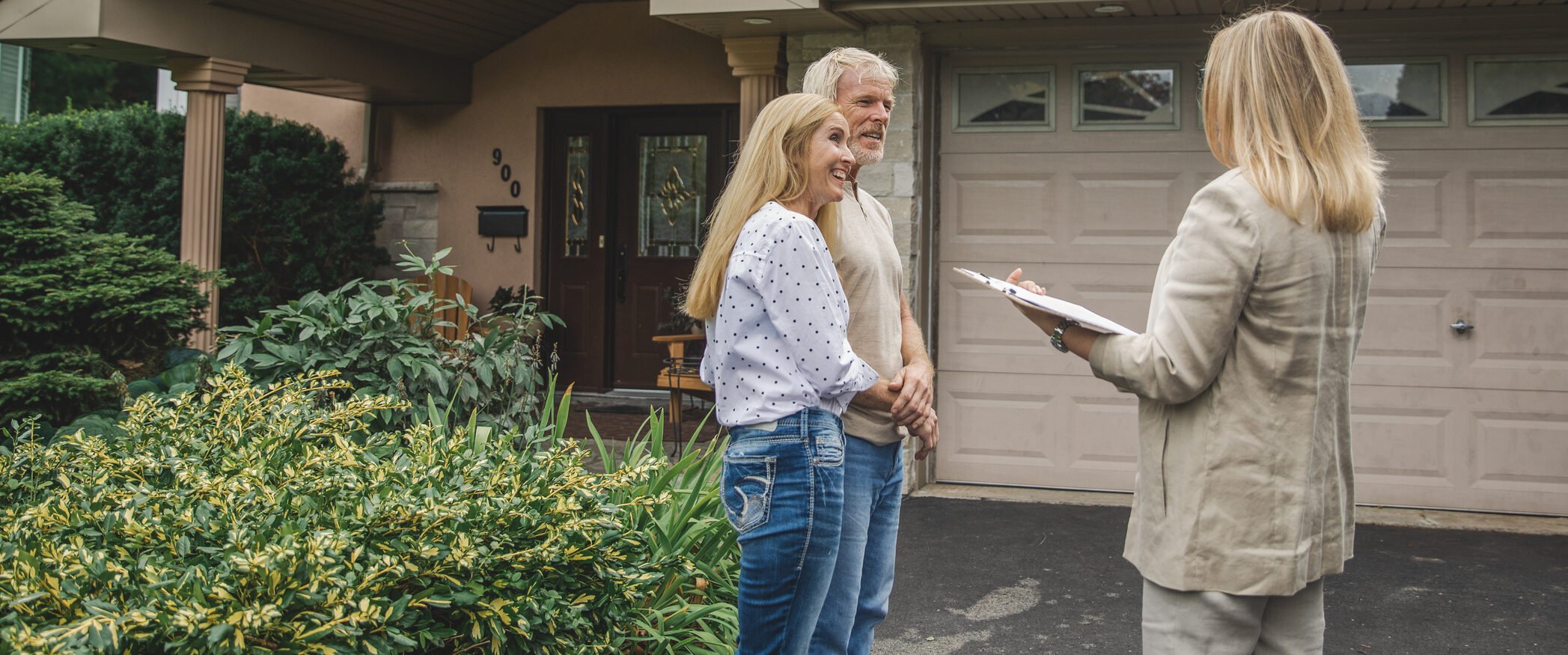Joint tenancy is when two or more people get a mortgage together to become equal co-owners of a home. The most common form of joint tenancy in Canada is between spouses or common law partners. Joint tenancy is just one way that you can own a home. Learn more about how joint tenancy mortgages work before deciding if one is right for you.
» MORE: How do mortgages work?
Get your lowest mortgage rate with nesto
Stay on the bright side of mortgages with Canada’s leading digital mortgage lender. Secure your commission-free, low rate guarantee mortgage with nesto today.
What is a joint tenancy mortgage?
A joint tenancy mortgage gives all parties to the agreement an equal ownership of the home, as well as equal responsibility for the mortgage payments.
More importantly, the co-owners in a joint tenancy (as opposed to tenants-in-common) have the right of survivorship. This means that if one co-owner dies, their share of the home goes directly to the remaining co-owner(s) and can’t be transferred to a third party via a will, which avoids probate fees. Note that with a joint tenancy mortgage, all parties who are on the property title will need to sign the mortgage agreement.
» MORE: Mortgage payment options in Canada
How a joint tenancy mortgage works
Joint tenancy mortgages work the same way most mortgages do. Potential mortgage lenders will decide if you and your co-applicant(s) meet the qualification requirements. To do this, the lender will look at things like credit scores, overall income and the debt-to-income ratio of each person.
Remember that as joint tenancy mortgage holders, each person will own an equal share of the property (and is on the property title). Furthermore, each person on the mortgage will bear an equal responsibility to make the monthly payments. This will likely not be an issue for a married or common-law couple, but it could be an issue for parents who get a joint tenancy mortgage with an adult child. Even there’s an understanding that the child will make all the payments, the parents will be held responsible to make up any missed payments.
Finally, it’s important to understand that a joint tenant can unilaterally decide to convert a joint tenancy to a tenancy-in-common. This may be an option in the event of a divorce where a spouse does not want their ex to automatically inherit the house when they die.
» MORE: How to pass the mortgage stress test
Best Mortgage Rates in Canada
Compare Canada’s top mortgage lenders and brokers side-by-side and find out the best mortgage rates that will meet your need
When a joint tenancy mortgage makes sense
Married couples generally choose a joint tenancy mortgage because they both want equal ownership of the home and, more importantly, they want the remaining spouse to have automatic full ownership of the property (via right of survivorship) if one of them dies. Parents and grown children who want equal ownership of a home might also opt for joint tenancy, however, the right of survivorship is not as straightforward because it can be challenged by the other beneficiaries of the estate.
» MORE: How much mortgage can I afford?
Pros and cons of a joint tenancy mortgage
Pros
- Increases chance of mortgage approval.
- Because one or more people may be combining incomes, you may have more purchasing power and also be able to make a bigger down payment (meaning you may not have to buy mortgage default insurance).
- Responsibility to make monthly mortgage payments is shared by two people.
- Right of survivorship means that joint tenant owner could avoid probate costs and costly estate taxes (though this may not be the case if a child and parent share a mortgage)
Cons
- All parties are equally responsible for mortgage payments, which could become a problem if one person can’t keep up with their share of payments
- If one of the co-owners damages their credit score, it would negatively affect the credit ratings of all those on the mortgage
Alternatives to a joint tenancy mortgage
Other options that may be worth considering, depending on your circumstances, are getting a tenants-in-common mortgage or getting someone to co-sign your mortgage.
Joint tenancy vs. tenants-in-common
The main difference between tenants-in-common and joint tenancy is that tenants-in-common does not include an automatic right of survivorship. That means if a tenant-in-common dies, their ownership share of the property does not go automatically to the other co-owners but rather becomes part of the deceased person’s estate. The deceased’s portion of ownership in the property will then be dispersed according to the instructions in their will.
A joint tenancy can be changed to a tenants-in-common agreement by either of the parties without the consent of the other owner.
DIVE EVEN DEEPER

How to Save for a Down Payment
First, decide how big of a down payment you’ll need and set a goal. Then, determine the best place to keep your money for maximum growth.

Mortgage Insurance: How It Works And What It Might Cost You
Mortgage default insurance protects lenders against defaulting borrowers. Mortgage protection insurance pays your mortgage if you die or become disabled.



